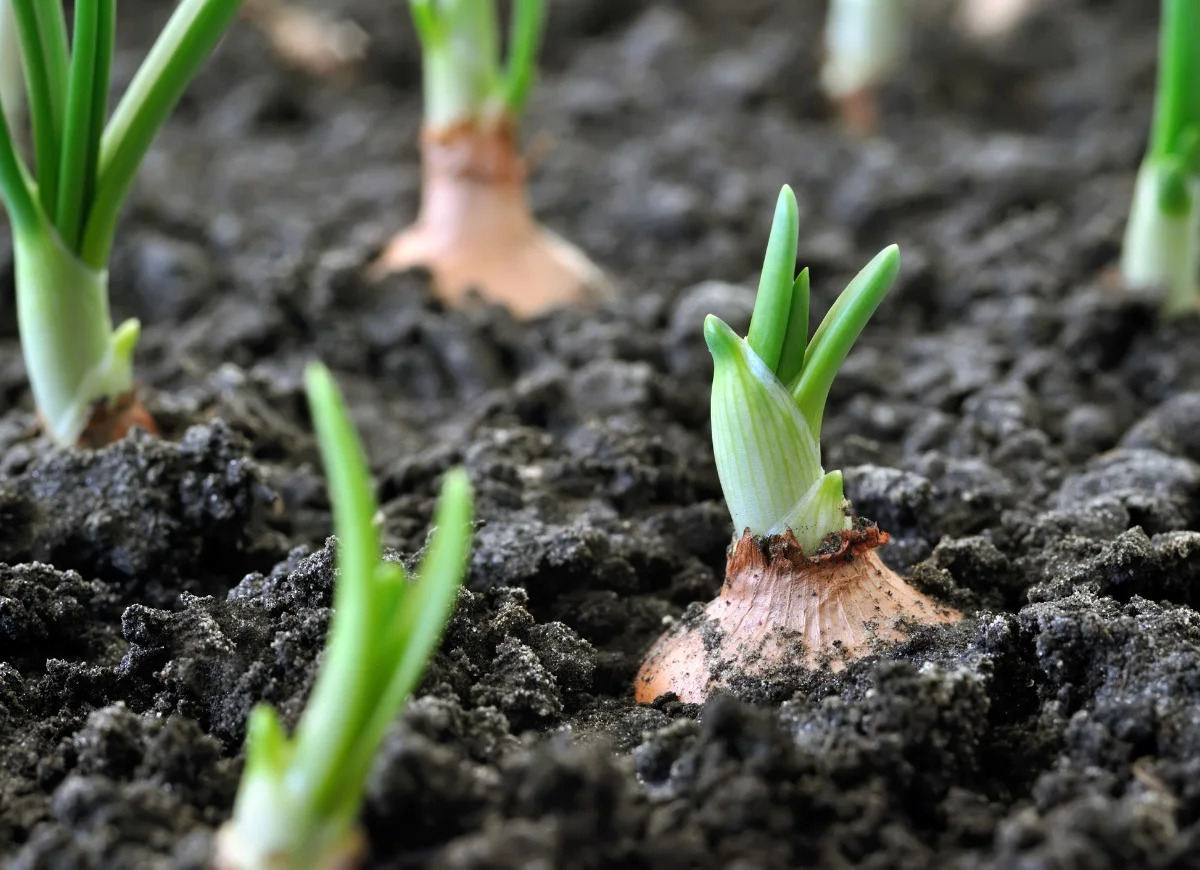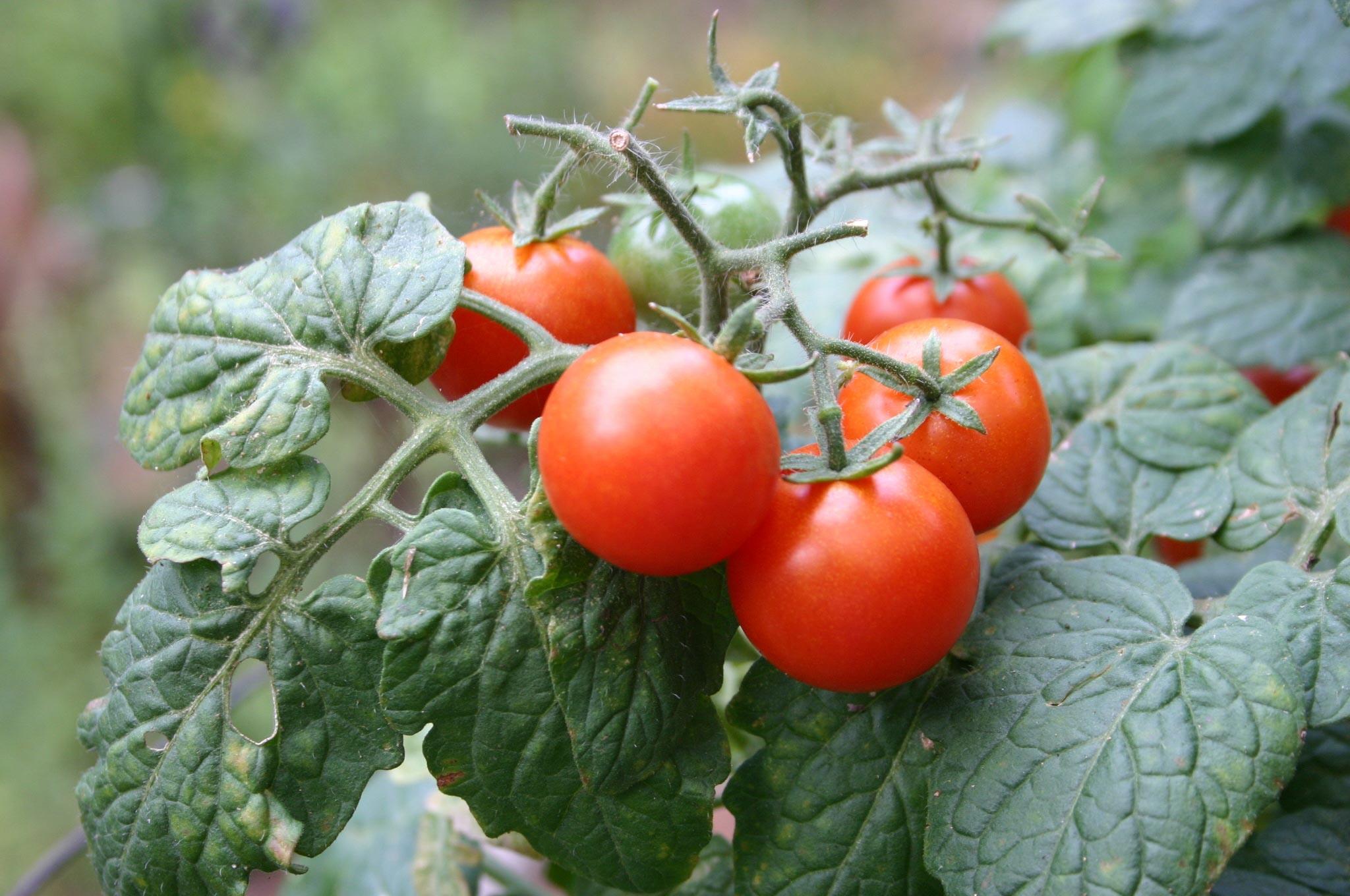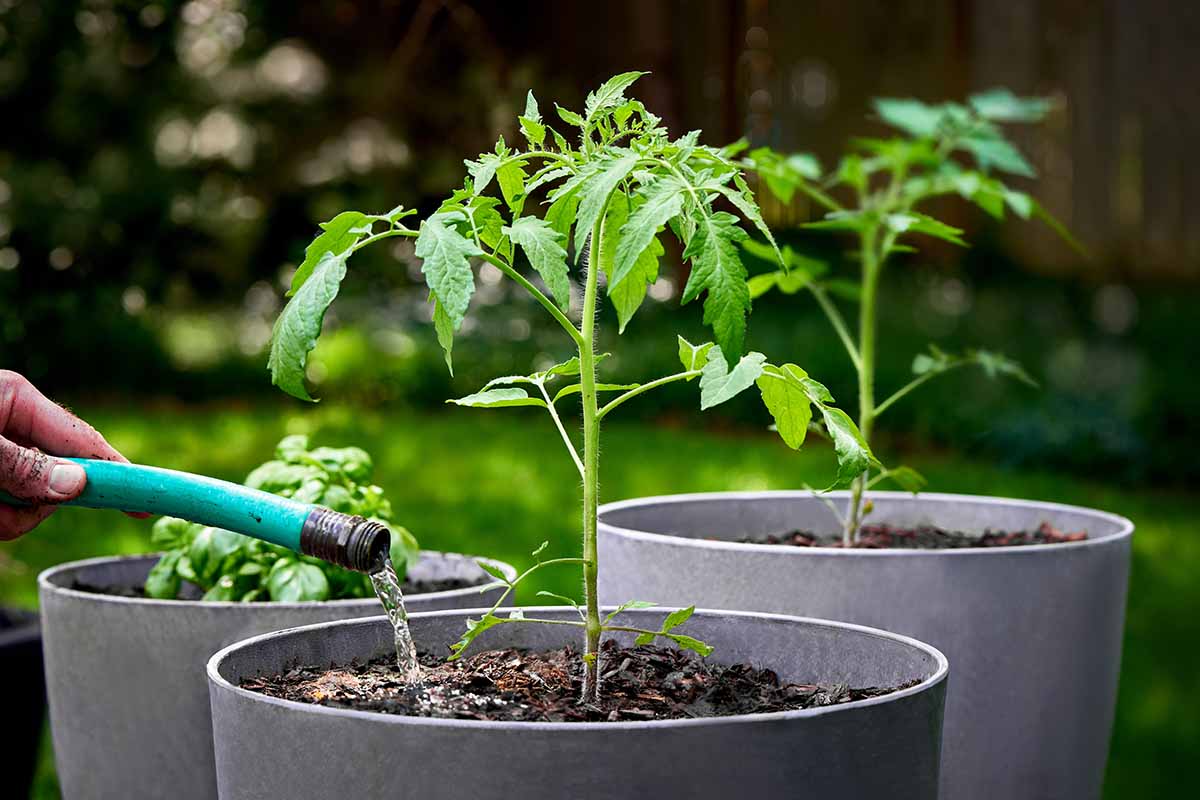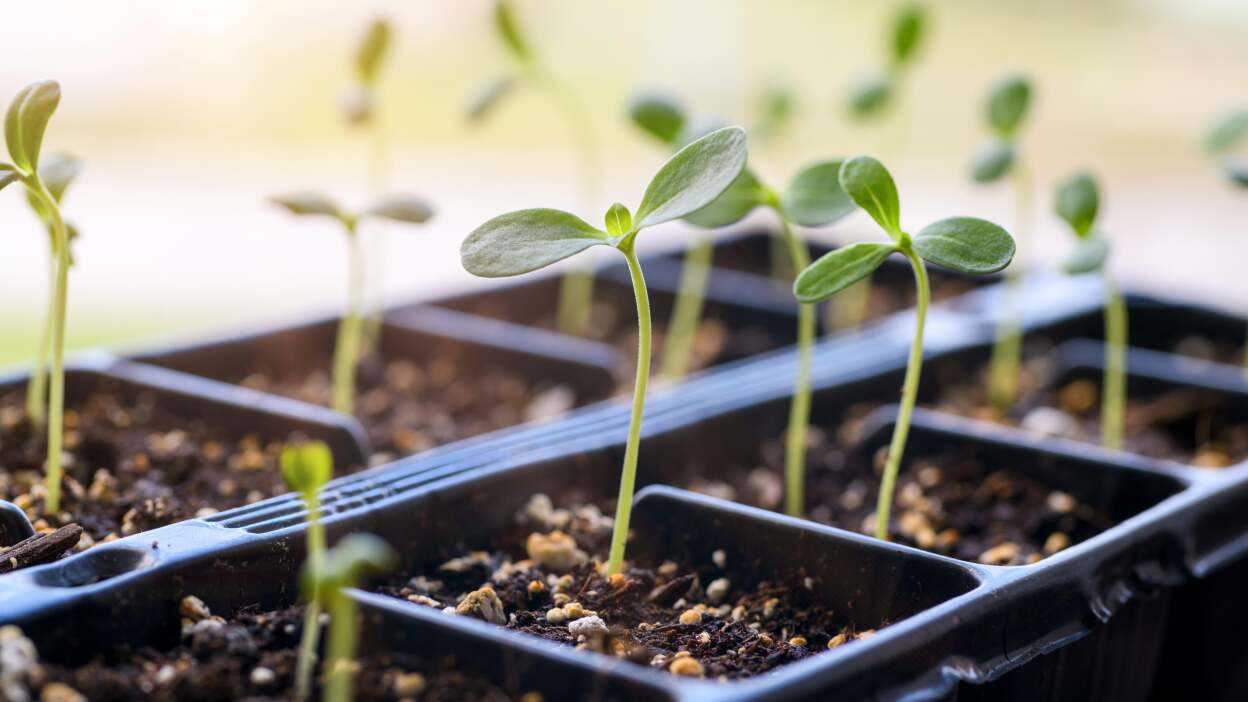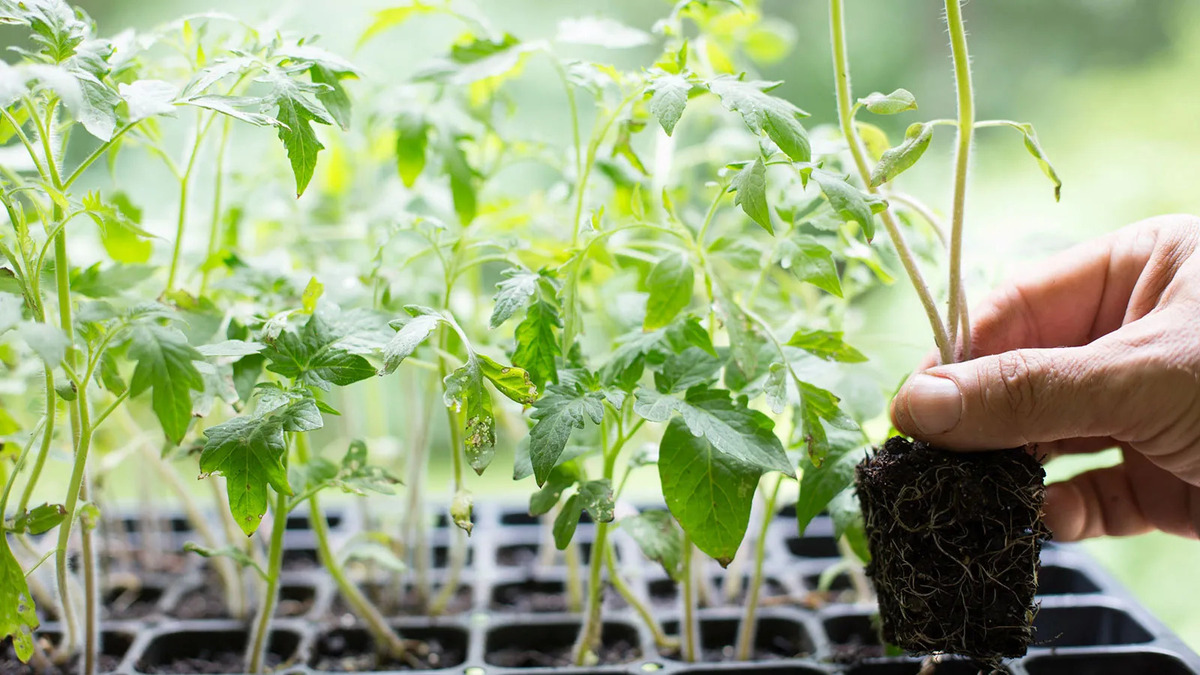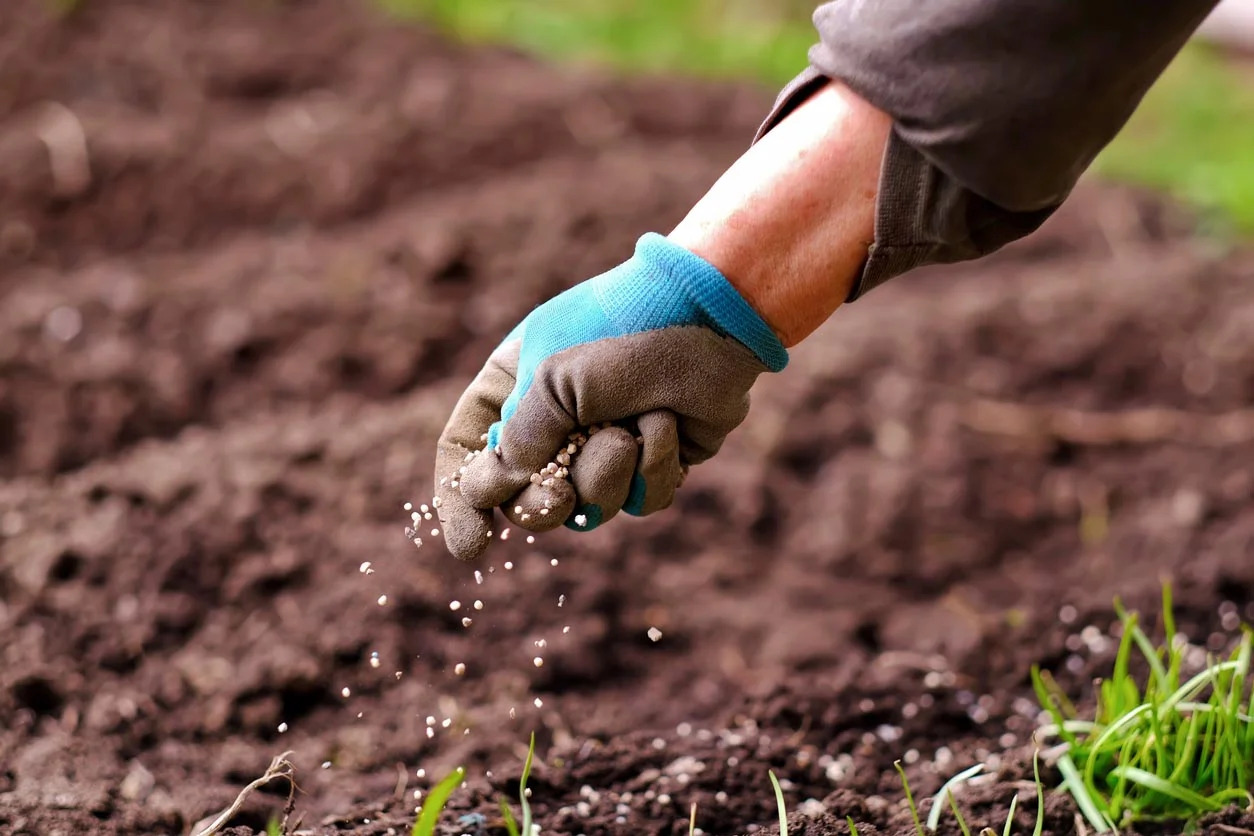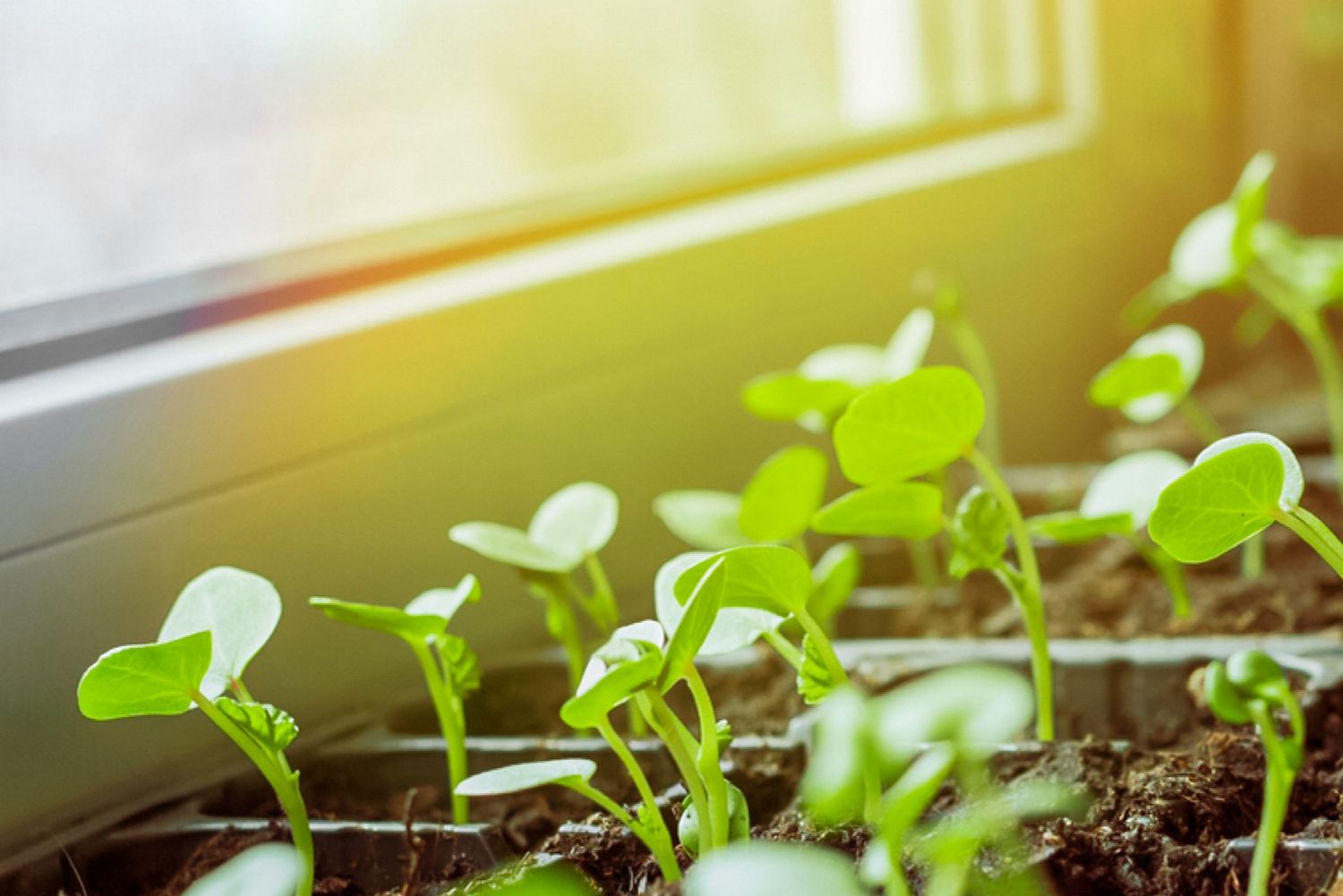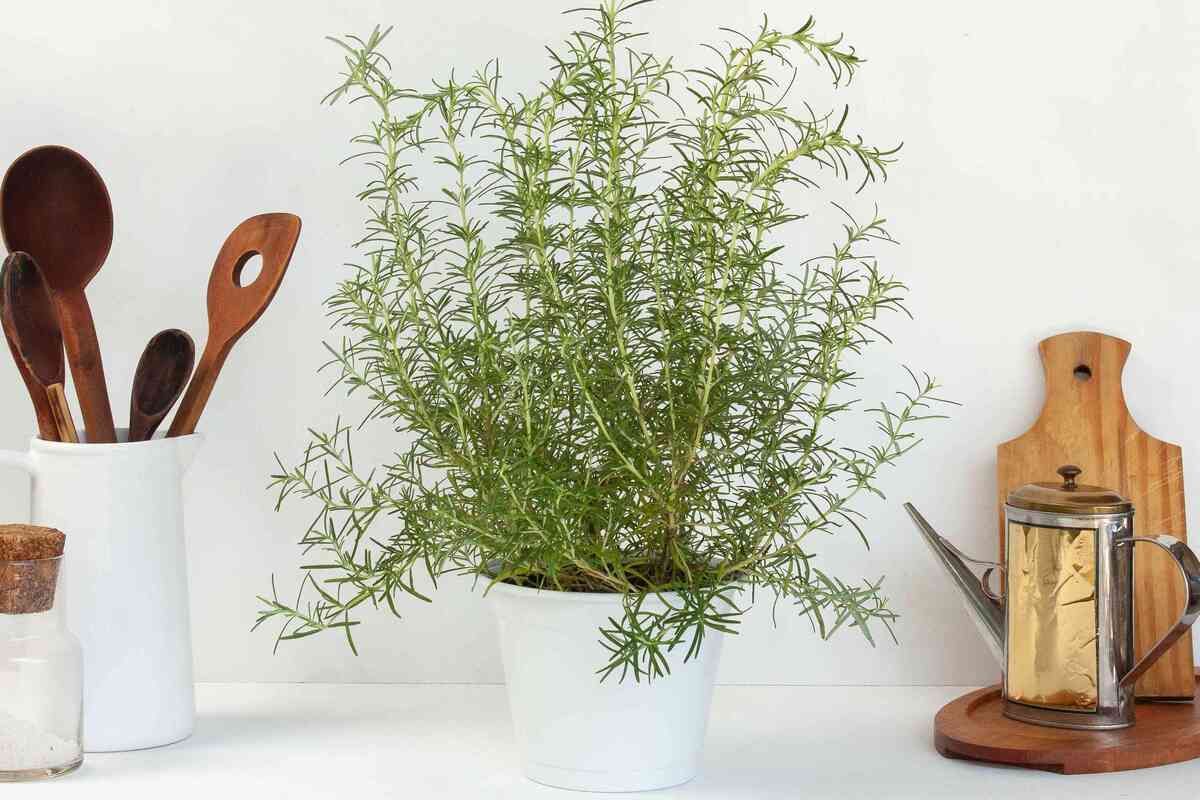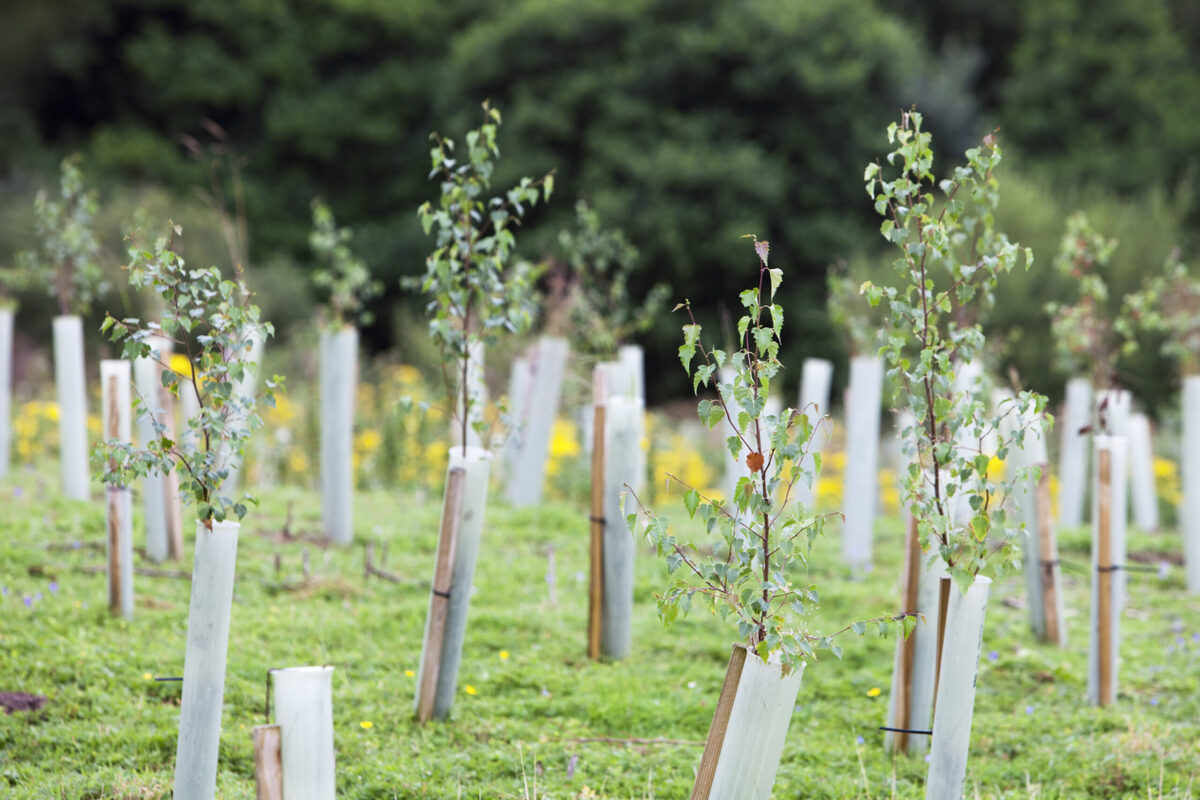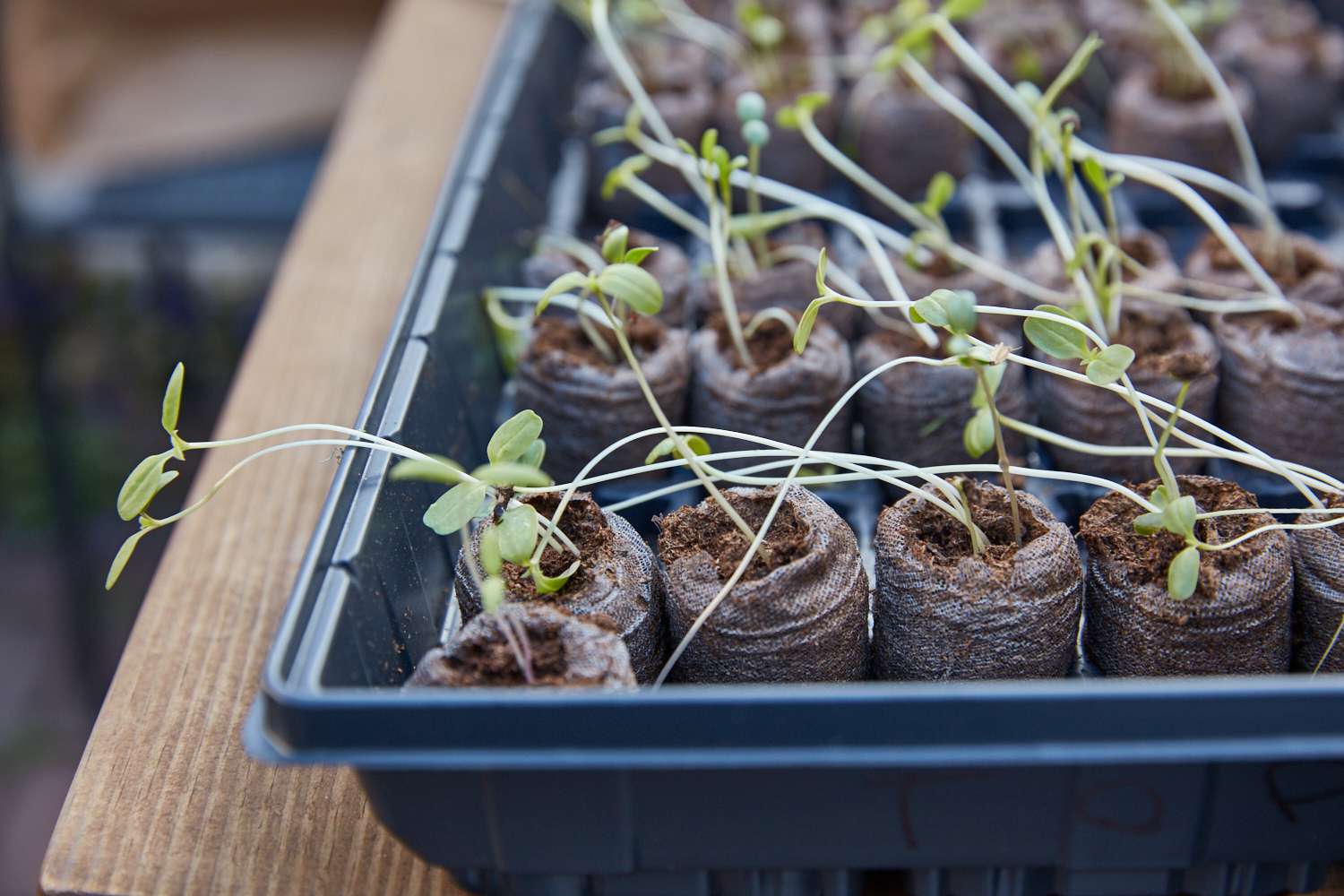Home>Types of Gardening>Edible Gardening>When Do You Fertilize Tomato Seedlings
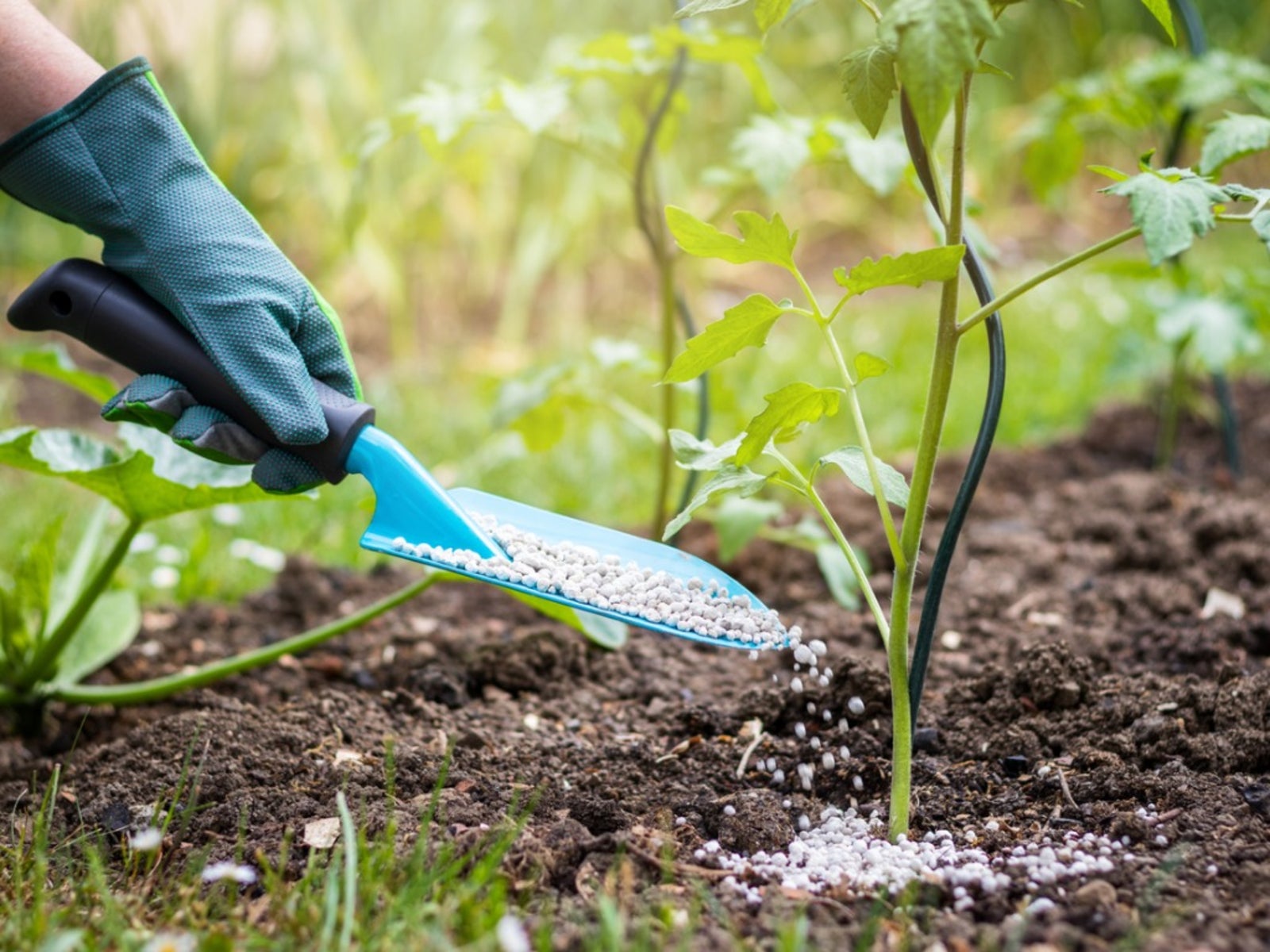

Edible Gardening
When Do You Fertilize Tomato Seedlings
Modified: February 10, 2024
"Discover the best timing for fertilizing tomato seedlings in your edible gardening journey. Maximize growth and yield with expert tips and advice."
(Many of the links in this article redirect to a specific reviewed product. Your purchase of these products through affiliate links helps to generate commission for Chicagolandgardening.com, at no extra cost. Learn more)
Table of Contents
- Introduction
- Why Fertilize Tomato Seedlings?
- Factors to Consider Before Fertilizing
- Understanding Tomato Nutrient Requirements
- Best Types of Fertilizer for Tomato Seedlings
- Method of Fertilizing Tomato Seedlings
- How Often to Fertilize Tomato Seedlings
- Signs of Over-Fertilization in Tomato Seedlings
- Signs of Under-Fertilization in Tomato Seedlings
- Common Mistakes to Avoid When Fertilizing Tomato Seedlings
- Conclusion
Introduction
Welcome to the world of edible gardening, where the joy of growing your own food is both satisfying and rewarding. One plant that is a staple in many home gardens is the tomato. From its vibrant colors to its juicy and flavorful fruits, tomatoes are a versatile and delicious addition to any dish. If you’ve recently started growing tomato seedlings, you may be wondering when and how to fertilize them to ensure optimum growth and a bountiful harvest.
Fertilizing tomato seedlings is a crucial step in their development, providing the essential nutrients they need to thrive. By supplementing the soil with the right combination of nutrients, you can ensure that your tomato seedlings grow strong, healthy, and productive. However, it’s important to know when and how to fertilize them to avoid overdoing it or underfeeding.
In this article, we’ll explore the factors to consider before fertilizing tomato seedlings, the different types of fertilizers suitable for tomato plants, the method of fertilizing, and how often to fertilize. We’ll also discuss the signs of over-fertilization and under-fertilization so you can assess the health of your tomato seedlings. By understanding these aspects, you’ll be well-equipped to provide your tomato seedlings with the nourishment they need to flourish.
So, let’s dive in and discover the secrets to successful fertilization of tomato seedlings!
Why Fertilize Tomato Seedlings?
Fertilizing tomato seedlings serves as a vital component in their growth and development journey. While soil provides some essential nutrients, it may not always contain an optimal balance necessary for robust and productive plants. Fertilizing helps bridge this nutrient gap, ensuring that your tomato seedlings have access to all the elements they need for healthy growth.
One of the primary reasons to fertilize tomato seedlings is to provide them with a steady supply of macronutrients such as nitrogen (N), phosphorus (P), and potassium (K) – collectively known as NPK. These macronutrients are essential for various plant functions. Nitrogen aids in leaf and stem development, phosphorus promotes root growth, flowering, and fruiting, and potassium helps with overall plant health and disease resistance.
Another key benefit of fertilizing tomato seedlings is that it helps sustain their growth during the critical early stages. When tomato seeds germinate, they rely solely on stored nutrients within the seed. As they grow into seedlings, these reserves diminish, necessitating external nourishment. Fertilizing early on can provide a nutrient boost, giving your tomato seedlings a head start and setting them up for success.
Furthermore, a well-nourished tomato plant is better equipped to combat pests, diseases, and environmental stresses. Adequate nutrient availability strengthens the plant’s immune system, making it less susceptible to common tomato ailments such as blossom end rot, fungal infections, and wilting. By fertilizing tomato seedlings, you are fortifying their defenses and increasing their chances of thriving.
Overall, fertilizing tomato seedlings is essential for ensuring vigorous growth, strong roots, abundant flowering, and a plentiful harvest. By providing the necessary nutrients, you are setting the stage for healthy and productive tomato plants.
Factors to Consider Before Fertilizing
Before you grab your fertilizer and start applying it to your tomato seedlings, there are a few important factors to consider. Taking these factors into account will help you make informed decisions about when and how to fertilize, ensuring the best results for your plants.
1. Seedling Age: The age of your tomato seedlings will determine when it’s time to start fertilizing. Typically, it’s best to wait until the seedlings have developed their first true leaves, which appear after the cotyledon leaves. This ensures that the seedlings have established a sufficient root system to efficiently absorb nutrients.
2. Soil Quality: Assessing your soil quality is crucial before fertilizing. Conduct a soil test to determine its pH level and nutrient content. This information will help you choose a suitable fertilizer and determine any nutrient deficiencies or imbalances that need to be addressed.
3. Fertilizer Type: Consider the type of fertilizer you plan to use. There are various options available, including organic and synthetic fertilizers. Organic fertilizers are derived from natural sources and release nutrients slowly over time. Synthetic fertilizers, on the other hand, are chemically formulated and provide nutrients in a readily available form. Choose a fertilizer that aligns with your gardening preferences and goals.
4. Nutrient Requirements: It’s essential to understand the specific nutrient requirements of tomato plants. While nitrogen (N), phosphorus (P), and potassium (K) are the primary macronutrients, tomatoes also require secondary nutrients like calcium (Ca), magnesium (Mg), and sulfur (S), as well as micronutrients such as iron (Fe), zinc (Zn), and manganese (Mn). Ensure your chosen fertilizer contains these elements or supplement accordingly.
5. Environmental Factors: Consider the climate and environmental conditions in your region. Temperature, humidity, rainfall, and sunlight all impact nutrient availability and uptake by plants. Adjust your fertilization schedule and amounts accordingly to account for these factors.
By taking these factors into consideration, you can make informed decisions about fertilizing your tomato seedlings. This will help ensure that you provide the right nutrients at the right time, setting the stage for healthy and thriving plants.
Understanding Tomato Nutrient Requirements
To effectively fertilize your tomato seedlings, it’s crucial to understand their specific nutrient requirements. While tomatoes have different nutritional needs throughout their lifecycle, focusing on key macronutrients and micronutrients is essential for their overall health and productivity.
The primary macronutrients required by tomatoes are nitrogen (N), phosphorus (P), and potassium (K). Nitrogen plays a vital role in promoting foliage growth, giving your plants lush green leaves and strong stems. Phosphorus is crucial for root development, flowering, and fruit set. Potassium helps with overall plant health, disease resistance, and fruit quality.
In addition to the macronutrients, tomatoes also require secondary nutrients like calcium (Ca), magnesium (Mg), and sulfur (S). Calcium is essential for strong cell walls and preventing disorders such as blossom end rot. Magnesium is a crucial component of chlorophyll, enabling photosynthesis and enhancing fruiting. Sulfur helps with protein synthesis and overall plant growth.
Furthermore, tomatoes require various micronutrients in smaller quantities. Iron (Fe), manganese (Mn), zinc (Zn), copper (Cu), molybdenum (Mo), and boron (B) are examples of micronutrients necessary for proper plant growth and function. They play roles in enzyme activation, hormone synthesis, and nutrient uptake.
Remember that nutrient requirements may change throughout the different stages of tomato growth. Initially, during vegetative growth, higher nitrogen levels are beneficial for promoting leaf and stem development. However, as the plants enter the flowering and fruiting stage, a shift towards a higher phosphorus and potassium ratio is required to support abundant blossoms and robust fruit set.
Consider your soil test results to determine any nutrient deficiencies or imbalances. This information will guide you in selecting a well-balanced fertilizer or amending the soil with organic matter or specific micronutrient supplements.
By understanding the specific nutrient requirements of tomatoes, you can ensure that you provide the necessary elements in appropriate ratios, promoting healthy growth and maximizing the yield of your tomato plants.
Best Types of Fertilizer for Tomato Seedlings
When it comes to fertilizing tomato seedlings, choosing the right type of fertilizer is crucial. There are several options available, each with its own advantages and considerations. Here are some of the best types of fertilizers for tomato seedlings:
1. Organic Fertilizers: Organic fertilizers are derived from natural sources such as compost, manure, fish emulsion, and bone meal. They provide a slow-release of nutrients, supporting long-term plant growth. Organic fertilizers improve soil health, promote microbial activity, and enhance nutrient availability. They are an excellent choice for gardeners who prefer an organic approach.
2. Synthetic Fertilizers: Synthetic or chemical fertilizers are formulated to provide plants with specific nutrients in readily available forms. They offer precise control over nutrient ratios and are typically faster-acting than organic fertilizers. Synthetic fertilizers are convenient to use and can address nutrient deficiencies more quickly. However, they may not improve soil health as effectively as organic options.
3. Controlled-Release Fertilizers: Controlled-release fertilizers, also known as slow-release fertilizers, release nutrients gradually over an extended period. These granular fertilizers are coated to control the rate of nutrient release, providing a continuous supply of nutrients to the plants. Controlled-release fertilizers require fewer applications, reducing the risk of over-fertilization and nutrient leaching.
4. Liquid Fertilizers: Liquid fertilizers come in concentrated forms and can be mixed with water for easy application. They are quickly absorbed by the plants, providing rapid nutrient uptake. Liquid fertilizers are particularly useful for foliar feeding, where nutrients are sprayed directly onto the leaves. They can also be applied to the soil for root absorption.
5. Organic Compost: Compost is a nutrient-rich soil amendment made from organic matter such as kitchen scraps, yard waste, and plant debris. Adding compost to the soil improves its structure, enhances moisture retention, and provides a slow release of nutrients. Compost can be used as a standalone fertilizer or incorporated into potting mixes for container-grown tomato seedlings.
When selecting a fertilizer, consider the nutrient requirements of your tomato seedlings, the soil quality, and your gardening preferences. It is important to provide a balanced blend of macronutrients and ensure the inclusion of essential micronutrients for optimal plant growth. Remember to follow the manufacturer’s instructions for application rates and frequency.
By choosing the best type of fertilizer for your tomato seedlings, you will provide them with the necessary nutrients for healthy development and a bountiful harvest.
Method of Fertilizing Tomato Seedlings
When it comes to fertilizing tomato seedlings, the method of application is just as important as the type of fertilizer you choose. Properly applying fertilizer ensures that the nutrients reach the roots and are absorbed by the plants effectively. Here are some key methods of fertilizing tomato seedlings:
1. Broadcasting: Broadcasting is a method where you spread the fertilizer evenly over the soil surface around the base of the seedlings. Use a scoop or your hands to sprinkle the fertilizer, taking care not to directly contact the leaves or stems. After applying, gently rake the soil to incorporate the fertilizer into the top layer. This method works well for granular or powdered fertilizers.
2. Side-Dressing: Side-dressing involves applying fertilizer in a band along the side of the row or planting furrow, away from the stem of the seedlings. Use a trowel or garden hoe to create a shallow trench about 3 to 4 inches from the plants. Spread the fertilizer evenly in the trench and cover it with soil, ensuring that it does not come in direct contact with the roots. Side-dressing is beneficial for slow-release or organic fertilizers.
3. Foliar Feeding: Foliar feeding is the process of applying fertilizer directly to the leaves of the tomato seedlings. Dilute the liquid fertilizer according to the manufacturer’s instructions and spray it onto the leaves using a handheld sprayer. This method allows the plants to absorb nutrients through their foliage, providing a quick nutrient boost. Foliar feeding is best done early in the morning or late in the evening to avoid burning the leaves in direct sunlight.
4. Drenching: Drenching involves saturating the soil around the seedlings with a liquid fertilizer solution. Measure the appropriate amount of liquid fertilizer and pour it around the base of the plants, making sure to cover the entire root zone. This method allows the fertilizer to penetrate the soil and reach the roots directly, providing efficient nutrient uptake.
When applying fertilizer, it’s crucial to follow the recommended dosage and instructions provided by the manufacturer. More is not always better, and over-fertilization can harm the tomato seedlings. Additionally, be mindful of weather conditions when fertilizing, avoiding application during extreme heat or heavy rainfall.
Remember to water the tomato seedlings after fertilizing to help the nutrients dissolve and reach the roots. This will aid in proper nutrient absorption and prevent fertilizer burn. Regular watering throughout the growing season will also ensure the continuous availability of nutrients to the plants.
By employing the appropriate method of fertilization, you can effectively deliver nutrients to your tomato seedlings, promoting healthy growth and maximizing their potential.
How Often to Fertilize Tomato Seedlings
Knowing how often to fertilize your tomato seedlings is crucial to ensure their nutritional needs are met without causing nutrient imbalances or over-fertilization. The frequency of fertilization depends on various factors, including the type of fertilizer used, plant growth stage, soil conditions, and environmental factors. Here are some guidelines to help you determine how often to fertilize your tomato seedlings:
1. Seedling Stage: When the tomato seedlings are just starting, their nutrient needs are relatively low. If you have prepared the soil with compost or organic matter beforehand, additional fertilization may not be necessary until the seedlings develop their first true leaves. However, if the seedlings show signs of slow growth or nutrient deficiencies, a diluted, balanced liquid fertilizer can be applied once a week.
2. Vegetative Growth: As the seedlings mature and enter the vegetative growth stage, they require more nutrients to support foliage development. Using a balanced fertilizer with a higher nitrogen content every 2-4 weeks can provide the necessary nutrients for healthy leaf and stem growth. However, make sure not to over-fertilize, as too much nitrogen can result in excessive foliage growth at the expense of fruit production.
3. Flowering and Fruiting Stage: Once the tomato plants begin to flower and set fruit, their nutrient requirements change. At this stage, it is advisable to switch to a fertilizer with a higher phosphorus and potassium content to promote flower and fruit development. Apply fertilizer every 3-4 weeks or as directed by the fertilizer product label.
4. Soil Conditions and Nutrient Deficiencies: Monitor the condition of your soil and the overall health of the tomato seedlings. Conduct regular soil tests to assess nutrient levels and pH. If the tests reveal deficiencies or imbalances, adjust your fertilization schedule accordingly. Incorporate specific organic amendments or targeted fertilizer applications to address the identified nutrient needs.
5. Environmental Factors: Environmental conditions can affect nutrient uptake and plant growth. In periods of heavy rainfall or frequent watering, nutrients can leach out of the soil more quickly, requiring more frequent fertilization. Conversely, during drought or dry spells, plants may not need fertilization as often. Monitor the moisture levels in the soil and adjust the fertilization frequency accordingly.
It’s important to remember that these are general guidelines, and specific conditions may vary. Always refer to the fertilizer product label for instructions on application rates and frequency. Keep in mind that tomato plants can tolerate slight variations in nutrient levels, so it’s better to err on the side of caution and slightly under-fertilize rather than over-fertilize.
By providing the appropriate amount of fertilizer at the right stages of growth, you can promote healthy development and maximize the yield of your tomato seedlings.
Signs of Over-Fertilization in Tomato Seedlings
While fertilizing tomato seedlings is important for their growth and productivity, it is crucial to avoid over-fertilization. Over-fertilization can lead to nutrient imbalances, salt buildup in the soil, and plant stress. It is important to be aware of the signs of over-fertilization so that you can take corrective measures. Here are some common signs to watch out for:
1. Leaf Burn: One of the most noticeable signs of over-fertilization is leaf burn. The leaf margins may turn brown, dry out, and become crispy. Excessive salts in the fertilizer can cause this burning effect on the foliage. If you notice browning or crispy edges on the leaves, it is a clear indication that you have applied too much fertilizer.
2. Stunted Growth: Over-fertilization can inhibit the overall growth of tomato seedlings. If you find that your seedlings are not growing as expected or are smaller than usual, it may be a sign of excessive fertilization. The excessive nutrients can affect the delicate balance of growth hormones and disrupt the development of the plants.
3. Wilting or Yellowing Leaves: Over-fertilization can lead to water imbalance in tomato seedlings. The excess salts can interfere with the plant’s ability to take up water, causing the leaves to wilt, even when the soil is moist. In some cases, over-fertilization can also cause the leaves to turn yellow, indicating nutrient deficiencies due to nutrient imbalances caused by excessive fertilizer application.
4. Delayed Flowering and Fruit Production: Too much nitrogen in the fertilizer can result in lush foliage growth at the expense of flower and fruit production. If your tomato seedlings are not blooming or setting fruit as expected, it might be a sign of over-fertilization. High nitrogen levels can delay or inhibit flower initiation and reduce fruit set.
5. Nutrient Deficiencies: Paradoxically, over-fertilization can also lead to nutrient deficiencies. Excessive amounts of certain nutrients can hinder the uptake of other essential nutrients, causing imbalances. Keep an eye out for symptoms of nutrient deficiencies, such as yellowing or mottling of leaves, as it can indicate that the excessive fertilizer is preventing the absorption of other necessary nutrients.
If you observe any of these signs, it is important to address the issue promptly. To correct over-fertilization, flush the soil with water to leach out the excess salts. Adjust your fertilization practices by reducing the amount or frequency of fertilizer applications. Also, consider using a balanced fertilizer with lower nitrogen content to avoid further over-fertilization.
Remember that moderation is key when fertilizing tomato seedlings. It is better to slightly under-fertilize than to over-fertilize. By being attentive to the signs of over-fertilization and making necessary adjustments, you can maintain the health and productivity of your tomato seedlings.
Signs of Under-Fertilization in Tomato Seedlings
Fertilizing tomato seedlings is essential for their healthy growth and development. However, under-fertilization can lead to nutrient deficiencies, stunted growth, and reduced yields. It’s important to be aware of the signs of under-fertilization so that you can take appropriate measures to support the nutrient needs of your tomato seedlings. Here are some common signs to watch out for:
1. Pale or Yellowing Leaves: One of the first signs of under-fertilization is pale or yellowing leaves. When tomato seedlings lack essential nutrients like nitrogen, magnesium, or iron, their leaves may lose their vibrant green color and exhibit a pale or yellowish hue. Nitrogen deficiency, in particular, often causes overall leaf yellowing, starting with older leaves.
2. Delayed or Stunted Growth: Insufficient nutrients can impact the overall growth and development of tomato seedlings. If your seedlings are not growing as vigorously as expected or appear smaller and weaker than usual, it may indicate under-fertilization. Without adequate nutrients, the plants struggle to develop strong root systems and may have difficulty absorbing water and nutrients from the soil.
3. Thin and Lanky Stems: Seedlings that are lacking in essential nutrients may have thin, weak, and elongated stems. This is commonly seen when there is a deficiency of nitrogen. Without enough nitrogen, the plants cannot produce enough chlorophyll, which is responsible for the green color and healthy growth of the stems and leaves. As a result, the seedlings may appear spindly and fragile.
4. Poor Fruit Set: Inadequate nutrient levels can lead to poor flower production and fruit set in tomato seedlings. Insufficient potassium, for example, can negatively affect flower development and reduce the number of fruit that successfully form. If you notice a low fruiting rate or smaller-sized fruits, it may indicate under-fertilization.
5. Nutrient-specific Symptoms: Different nutrient deficiencies can manifest in specific symptoms. For instance, a calcium deficiency can lead to blossom end rot, where the bottom of the fruits becomes rotten and black. Insufficient magnesium may cause interveinal chlorosis, with yellowing between the leaf veins. Pay attention to these specific symptoms to identify nutrient deficiencies and address them accordingly.
If you observe these signs of under-fertilization, it’s important to take action. Consider using a balanced fertilizer that provides all the necessary macro and micronutrients. Follow the recommended application rates and timing based on the fertilizer’s instructions. Supplementing with organic matter, such as compost or aged manure, can also help improve nutrient availability in the soil.
Regularly monitor the progress of your tomato seedlings and adjust your fertilization practices accordingly based on their growth and nutrient needs. By addressing under-fertilization, you can promote healthy plant growth, encourage fruit production, and maximize the yield of your tomato plants.
Common Mistakes to Avoid When Fertilizing Tomato Seedlings
Fertilizing tomato seedlings is a crucial step in promoting their healthy growth and ensuring a bountiful harvest. However, there are some common mistakes that gardeners often make when it comes to fertilization. Avoiding these mistakes will help you provide the right nutrients at the right time, optimizing the growth and productivity of your tomato plants. Here are some common mistakes to avoid when fertilizing tomato seedlings:
1. Over-Fertilization: One of the most common mistakes is over-fertilizing tomato seedlings. Applying excessive amounts of fertilizer can lead to nutrient imbalances, salt buildup in the soil, and plant stress. Follow the recommended dosage and application rates provided by the fertilizer manufacturer. Remember, it’s better to slightly under-fertilize than to over-fertilize, as overdoing it can burn the plants and negatively impact their overall health.
2. Under-Fertilization: On the other hand, under-fertilization can result in nutrient deficiencies and stunted growth. Ensure that you are providing the necessary nutrients to support the vigorous growth of your tomato seedlings. Regularly assess the nutrient needs of your plants and adjust the fertilization schedule accordingly. Conduct soil tests to identify nutrient deficiencies or consider using a balanced fertilizer to provide a comprehensive nutrient mix.
3. Poor Timing: Timing is crucial when it comes to fertilizing tomato seedlings. Applying fertilizer too early can overwhelm the young plants, and applying it too late can hinder their growth. Wait until the seedlings have established a strong root system and their first true leaves have emerged before starting fertilization. Additionally, consider the growth stage of the plants and adjust the nutrient ratios accordingly, focusing on nitrogen during vegetative growth and phosphorus and potassium during flowering and fruiting.
4. Neglecting Soil Health: Focusing solely on fertilization without considering the overall health of the soil is a common mistake. Healthy soil provides a favorable environment for nutrient uptake by the roots. Prioritize soil health by incorporating organic matter, such as compost, into the soil, maintaining proper moisture levels, and implementing good soil management practices. A well-balanced soil ecosystem will enhance nutrient availability and facilitate better nutrient absorption by the plants.
5. Ignoring Nutrient Interactions: Nutrients interact with one another, and their availability can be influenced by pH levels and other factors in the soil. pH levels, for instance, can affect the solubility and uptake of certain nutrients. Ensure that the pH of your soil is within the appropriate range for optimal nutrient availability. Consider nutrient interactions and supplement any nutrient deficiencies or imbalances to promote balanced plant nutrition.
6. Neglecting Watering Practices: Proper watering practices go hand in hand with fertilization. Over-watering or under-watering can affect the absorption of nutrients by the roots. Too much water can cause nutrient leaching, while too little water can hinder nutrient uptake. Maintain consistent soil moisture levels and water the plants properly, allowing the fertilizer to dissolve and reach the roots.
By avoiding these common mistakes and taking a thoughtful approach to fertilizing tomato seedlings, you can provide them with the right nutrients at the right time. This will support their healthy growth, increase their resilience to pests and diseases, and ultimately result in a successful and abundant harvest of delicious tomatoes.
Conclusion
Fertilizing tomato seedlings is an important aspect of edible gardening that can significantly impact the growth, health, and productivity of your tomato plants. Understanding when and how to fertilize is key to providing the right nutrients at the right time. By considering factors such as seedling age, soil quality, nutrient requirements, and environmental factors, you can make informed decisions about fertilization.
Choosing the best type of fertilizer for tomato seedlings, such as organic or synthetic fertilizers, controlled-release options, or organic compost, allows you to provide the necessary nutrients in a balanced and effective manner. Applying the chosen fertilizer through broadcasting, side-dressing, foliar feeding, or drenching ensures proper nutrient delivery to the roots.
Remember to consider the specific nutrient requirements of tomato plants, adjusting the fertilizer ratios accordingly throughout their growth stages. Monitoring signs of over-fertilization, such as leaf burn and stunted growth, allows you to take corrective actions such as flushing the soil and reducing the frequency or amount of fertilizer applied. Similarly, recognizing signs of under-fertilization, such as pale leaves and poor fruit set, helps you address nutrient deficiencies by using a balanced fertilizer and supplementing with organic matter or micronutrient amendments.
Avoid common mistakes like over-fertilization, poor timing, neglecting soil health, ignoring nutrient interactions, and improper watering practices. By taking a balanced and mindful approach to fertilizing tomato seedlings, you can create an optimal environment for them to flourish, resulting in healthy plants and a plentiful tomato harvest.
So, as you embark on your edible gardening journey, remember that fertilizing tomato seedlings is a vital step. With the knowledge and understanding gained from this article, you are now equipped to provide your tomato seedlings with the nutrients they need to thrive, ensuring a successful and delicious reward at the end of your gardening efforts.
